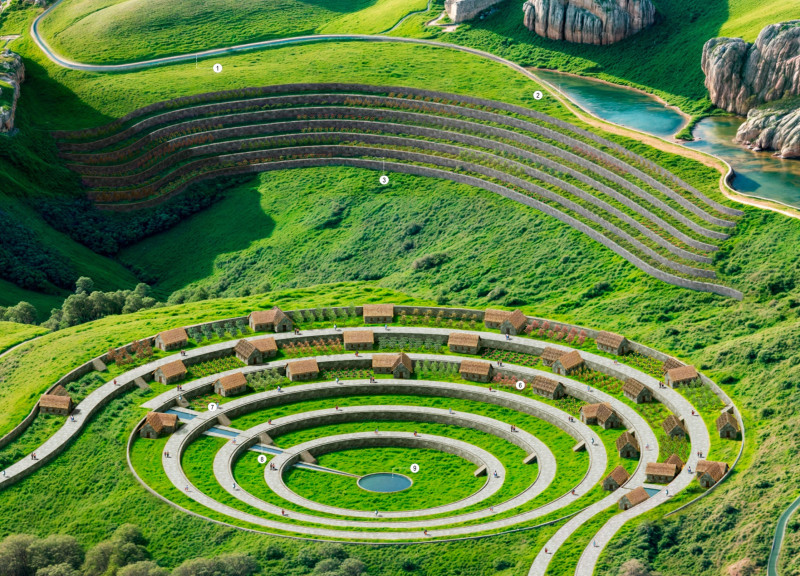5 key facts about this project
At first glance, the project's overall massing and layout are carefully considered, with a clear intention to harmonize with the surrounding environment. The structure is articulated through a series of interconnected volumes that create a dynamic spatial experience. The facades are characterized by an interplay of solid and void, allowing natural light to filter through and animating the interior spaces throughout the day. The use of large windows not only provides ample daylight but also establishes visual connections to the exterior landscape, effectively blurring the line between inside and outside.
Materiality plays a significant role in the project, reflecting both durability and contextual relevance. The primary materials employed include locally sourced brick, weathering steel, and sustainably harvested wood. Brick provides a sense of grounding and permanence, while weathering steel adds an industrial character that complements the building's modern architectural language. The use of wood within the interiors enhances warmth and comfort, creating inviting spaces for users. This thoughtful selection of materials underscores the project’s ecological considerations, as they contribute to energy efficiency and reduce the overall carbon footprint.
In terms of unique design approaches, the project incorporates several innovative strategies that elevate its architectural quality. One noteworthy aspect is the integration of green roofs and living walls, which not only enhance biodiversity but also improve insulation and air quality. These features emphasize the project’s commitment to sustainability and engage users with nature, promoting both mental and physical well-being. Furthermore, the building is designed to facilitate adaptive reuse, with flexible spaces that can accommodate changing community needs over time.
Inside, the layout is intuitively organized to encourage interaction among users. Multi-purpose rooms are strategically placed to allow for diverse activities, from workshops to gatherings, fostering collaboration and creativity. The central atrium serves as the heart of the building, a communal space designed for informal gatherings, art displays, and events. This central circulation spine not only enhances the flow through the building but also acts as a natural gathering point, promoting social engagement.
The exterior design also reflects the cultural and social context of the area. Elements such as local artwork and community-specific landmarks are thoughtfully incorporated into both the landscaping and interior design. This attention to local narratives allows the project to resonate deeply with its community, making it more than just a physical structure but rather an embodiment of collective identity.
Additionally, the architectural plans reveal a strategic approach to zoning and orientation, maximizing passive solar gain while minimizing heat loss. The building's orientation takes advantage of prevailing winds for natural ventilation, further emphasizing its sustainability goals. Architectural sections provide insights into the spatial dynamics and relationship between different levels, showcasing the architects' keen understanding of human interaction within the space.
As the analysis reflects, this architectural project successfully combines a range of considerations, from environmental stewardship to user experience, offering a comprehensive solution to community needs. The design's unique approaches and material choices not only enhance its functional capabilities but also elevate its significance within the local context. Readers interested in delving deeper into the intricacies of this project should explore its architectural plans, sections, and designs, which reveal further architectural ideas that shaped its realization.


 Pablo Landeo Mochcco
Pablo Landeo Mochcco 




















